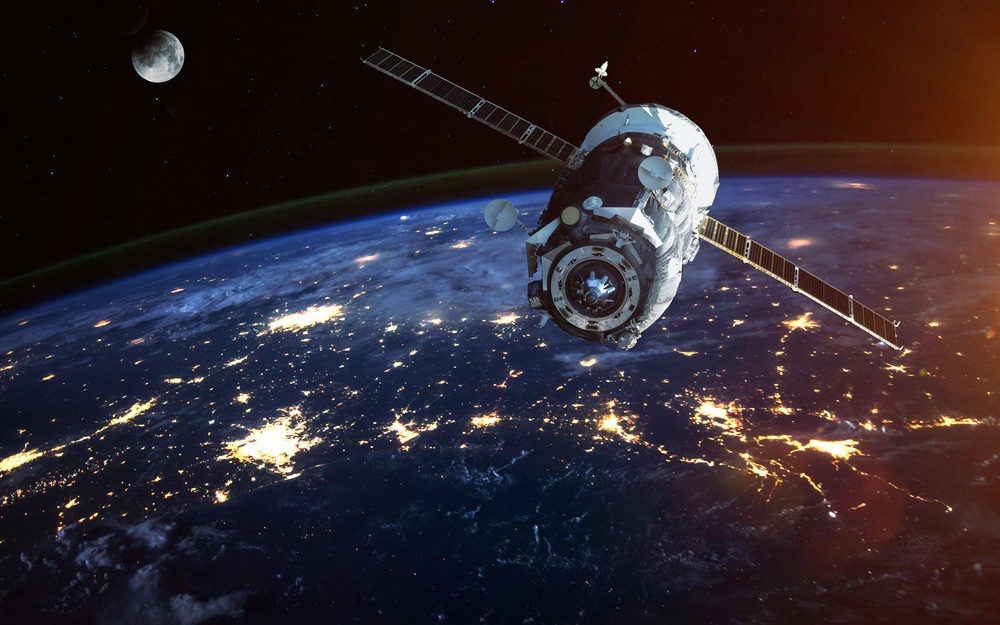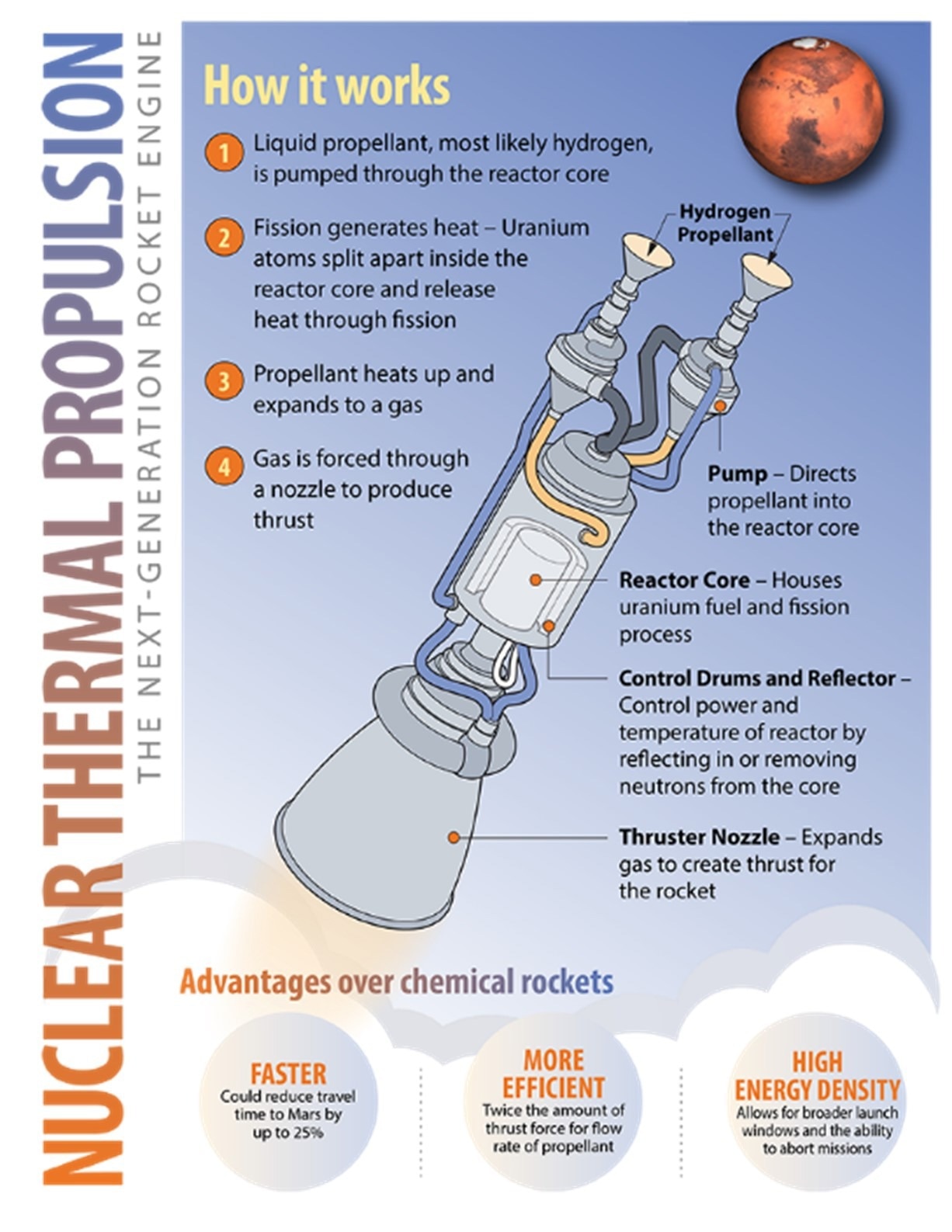The effectiveness of propulsion systems is crucial in achieving space mission objectives. Nuclear propulsion systems are the preferred choice for future space exploration missions. They are much more efficient than traditional chemical propulsion systems and offer higher thrust than sustainable alternatives such as solar energy.

Image Credit: Vadim Sadovski/Shutterstock.com
The Rapidly Evolving Domain of Space Exploration
With the technological advancements of the modern era ensuring faster rockets and efficient propulsion systems significantly reducing mission durations, space exploration has become the center of attention.
The new missions are no longer confined to exploring the moon and Mars. Instead, scientists are finding ways to unearth the mysteries of other celestial bodies, such as different planets and wormholes. Considerable investments are being allocated to the advancement of pioneering and effective propulsion systems to support missions in the realm of space exploration.
The first nuclear-propulsion-based spacecraft was launched in 1961. Since then, extensive research has been performed in nuclear propulsion systems, leading to a massive reduction in mission durations and increased payload capacity.
Scientific Foundation of Nuclear Propulsion
Traditional propulsion systems utilized in space rockets do not offer any distinct advantage regarding efficiency. As per the news article published by The European Space Agency, researchers resorted to cryogenic propulsion systems and electric propulsion, but these technologies were overtaken by nuclear propulsion.
Nuclear propulsion has the potential to be significantly more efficient than the most effective chemical propulsion systems. It can surpass the power limitations imposed by solar energy, opening up possibilities for exploration in areas where other technologies may face limitations.
Nuclear thermal and electric propulsion systems are the backbone of nuclear-based space exploration propulsion systems.
The U.S. Office of Nuclear Energy states that nuclear thermal propulsion (NTP) systems circulate a liquid propellant, often hydrogen, through a reactor core. The fission of uranium atoms within the core generates heat, instantly heating the propellants to a high temperature and converting them into a gas. This gaseous propellant is then expanded through a nozzle to generate thrust. NTP rockets exhibit higher energy density and twice the efficiency of chemical rockets.

An overview of nuclear thermal propulsion technology. Image Credit: U.S. Office of Nuclear Energy.
Nuclear Thermal Propulsion (NTP) systems provide increased flexibility for deep space missions. They can potentially shorten travel times to Mars by up to 25% and, crucially, minimize a flight crew's exposure to cosmic radiation. NTP systems can also offer broader launch windows independent of orbital alignments and enable the possibility for mission aborts and safe returns to Earth if needed.
The second subtype of nuclear propulsion systems is Nuclear Electric Propulsion (NEP) technology. These systems utilize the reactions in the nuclear reactor to generate electricity that operates the spacecraft.
NEP converts nuclear thermal energy into electrical energy, which is then utilized to power a propulsion system. The major advantage of using an NEP-based system is the reduced cost of equipment with increased fuel efficiency. NEP-based systems' overall weight is also considerably less than traditional propulsion systems.
Safety and Risk Mitigation
While nuclear propulsion is considered the future of space exploration, safety concerns exist. NASA's Office of Safety and Mission Assurance is crucial in establishing safety protocols when dealing with radioactive materials.
NASA procedural requirement document titled “NPR 8715.26” explicitly outlines procedures and key steps that must be followed during a nuclear-based flight, underscoring the importance of stringent safety measures in developing and operating nuclear propulsion systems.
NASA is also actively developing new technologies to enhance the safety of nuclear propulsion systems. One notable initiative involves investigating high-assay, low-enriched uranium as an alternative to highly enriched uranium.
This plan is a part of NASA's collaboration with the Defense Advanced Research Projects Agency (DARPA) to advance the development of nuclear-powered rockets to enable crewed missions to Mars. This strategic shift aims to mitigate the risk of nuclear proliferation, reflecting NASA's commitment to advancing nuclear propulsion technology with a keen emphasis on safety and non-proliferation measures.
Regulatory Framework for Nuclear Propulsion-Based Space Exploration
International collaboration is crucial for the responsible development and regulation of nuclear-powered space exploration. Organizations like the International Atomic Energy Agency (IAEA) play a pivotal role in fostering cooperation for promoting the use of nuclear technology in space.
In 2020, a Presidential Document was issued that declared the National Strategy for Space Nuclear Power and Propulsion in the United States.
This strategy provides guidelines and highlights the importance of nuclear energy-based units, such as radioisotope power systems and fission reactors, for power and propulsion in space missions. The policy emphasizes the importance of cooperation with commercial and international partners to advance America's space exploration objectives while adhering to safety and collaboration principles.
Missions and Future Prospects
The Demonstration Rocket for Agile Cislunar Operations (DRACO) program, led by NASA, aims to test a nuclear-powered rocket in space by 2027. Lockheed Martin is entrusted with spacecraft design, integration, and testing, while BWX Technologies in Lynchburg, Virginia, is tasked with designing and building the nuclear fission reactor powering the engine.
NASA's Space Technology Mission Directorate (STMD) oversees the overall management and execution of the nuclear-powered DRACO engine. This initiative represents a significant step toward advancing nuclear propulsion technology for future space exploration.
European Space Agency will execute Projects “RocketRoll” and “Alumni” to identify the operational and functional advantages of nuclear electric propulsion and thermal propulsion over classical propulsion systems. The key elements, such as modeling and testing capabilities, along with the safety features, will be studied in detail after 2035.
In the future, nuclear propulsion is expected to be the forerunner in propulsion technology. It is the core reason that a nuclear propulsion system is considered a viable option for several NASA missions, such as the Artemis program. Private companies must collaborate with governments to ensure the rapid development of this useful technology.
Continue Reading: How has Nuclear Energy Changed Over the Years?
References and Further Reading
ANS Nuclear Cafe, (2023). Nuclear thermal propulsion may finally take off for space flight. [Online] Available at: https://www.ans.org/news/article-4658/nuclear-thermal-propulsion-may-finally-take-off-for-space-flight/ [Accessed 26 November 2023].
Cleretton, A., (2023). Exploring the Cosmos: The Evolving Landscape of Space Exploration. [Online] Available at: https://www.sillotech.com/exploring-the-cosmos-the-evolving-landscape-of-space-exploration/ [Accessed 25 November 2023].
DW, (2023). NASA to test nuclear-powered spacecraft by 2027. [Online] Available at: https://www.dw.com/en/nasa-to-test-nuclear-powered-spacecraft-by-2027/a-64505202 [Accessed 27 November 2023].
Executive Office of the President, (2020). National Strategy for Space Nuclear Power and Propulsion. [Online] Available at: https://www.federalregister.gov/documents/2020/12/21/2020-28272/national-strategy-for-space-nuclear-power-and-propulsion [Accessed 27 November 2023].
Hall, L., (2023). NASA, DARPA Partner with Industry on Mars Rocket Engine. [Online] Available at: https://www.nasa.gov/technology/nasa-darpa-partner-with-industry-on-mars-rocket-engine/ [Accessed 27 November 2023].
Nuclear Power, (2023). How is nuclear technology used in space exploration?. [Online] Available at: https://www.nuclear-power.com/how-is-nuclear-technology-used-in-space-exploration/ [Accessed 25 November 2023].
U.S. Office of Nuclear Energy, (2021). 6 Things You Should Know About Nuclear Thermal Propulsion. [Online] Available at: https://www.energy.gov/ne/articles/6-things-you-should-know-about-nuclear-thermal-propulsion [Accessed 26 November 2023].
Disclaimer: The views expressed here are those of the author expressed in their private capacity and do not necessarily represent the views of AZoM.com Limited T/A AZoNetwork the owner and operator of this website. This disclaimer forms part of the Terms and conditions of use of this website.